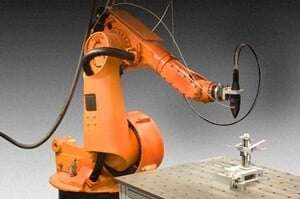Four data-driven trends for manufacturing in 2016

Manufacturing in 2016 should investigate how new technology, business software solutions and communication strategies could leverage the vast amounts of information available to modern companies.
Big data is a term often tossed around with some organizations unsure of what practical application implies. Consumers, employees, managers and shop floor activities all generate data that can be used by organizations. Information strategies aren’t just for theoretical planning. Having access to the information created by and related to production tasks allows workers to operate more efficient, informed and accurate manufacturing lines – provided businesses have the necessary tools and systems.
Here are some of the machines and ERP solutions companies will use in 2016 to take advantage of innovations and compete in an increasingly connected industry:
1. Cloud ERP
Many manufacturers already use cloud-deployed business solutions on mobile devices, and the numbers will continue to grow as the technology becomes more convenient and cost-efficient. Providing every member of a manufacturing operation with a consistent source of information, document sharing functionality and business intelligence capabilities will ensure quality and eliminate mistakes caused by miscommunication.
The Frost & Sullivan consulting firm said mobile ERP solutions help smaller operations compete with global corporations. Many cloud-deployed business systems are scalable, so organizations can pay for what they need and design implementation around specific functionality when working with an ERP partner.
ERP developers recognize the growing interest in the cloud. Newer releases like Microsoft Dynamics NAV 2016 were designed with startup and small-business demand in mind.
2. Robotics and smart machines
Automated machines used in production have been around for decades, but recently robots prove more adaptable to a variety of spaces. Manufacturing machines no longer perform singular, specialized tasks in a fixed location. Supply Chain 24/7 shared examples of robots that could bend steel, transport inventory and communicate with employees while moving around a factory on wheels.
As machines become smarter, they gain the ability to share insights with human managers. Today’s Energy Solutions suggested connected devices will become more commonplace as every industry embraces the Internet of Things. When production equipment reports its own performance, it provides real-time data about manufacturing schedules and product quality. Companies need centralized ERP systems so they can compare data pouring in from shop floor employees, supervisors and connected manufacturing equipment.
If decision-makers have complete visibility of operations, they can evaluate how new strategies perform as expected or when it’s time to invest in new productions tools.
3. New manufacturing strategies
Sometimes leveraging data doesn’t just mean making existing strategies smarter. Data-driven technology can completely revolutionize how businesses construct their products. In 2016, 3D printing – or layered manufacturing – should become more commonplace. The technology is able to build products from the ground up using a variety of materials and detailed schematics. Manufacturers can create intricately designed goods without the waste associated with traditional assembly.
The growing popularity of 3D printers does cause security concerns for many organizations, according to Information Week. There is a fear that creating products from scratch could promote the theft of intellectual property. Any organization with the right equipment can create identical products if they get their hands on the information involved with a business’s production process.
If any organization uses detailed and specialized data to manufacture goods, it needs to take steps to secure that information.
4. Selling directly to consumers
A connected world means manufacturers can interact with customers without going through a middleman. MarketResearch.com gathered information from a variety of industry reports that concluded more manufacturers will turn to eCommerce to sell their products. Any business – regardless of size – can use eCommerce solutions to create their own retail platform.
This may mean working with a variety of partners to help with distribution and marketing, but data-driven solutions can help businesses when they choose to take on responsibilities themselves. CRM integration with ERP solutions allow manufacturers to compare consumer feedback to production activities, to design new merchandise and marketing campaigns.
The data available to the modern company can assist any organization, make decisions, and take control of a variety of business activities. Manufacturers should reach out to an ERP partner to see where new business innovations could fit into their existing infrastructure.


